都市をたずねる 70 -「『ビッグオレンジボックス』再演1」 – “’Big Orange Box’ Re-enactment 1”
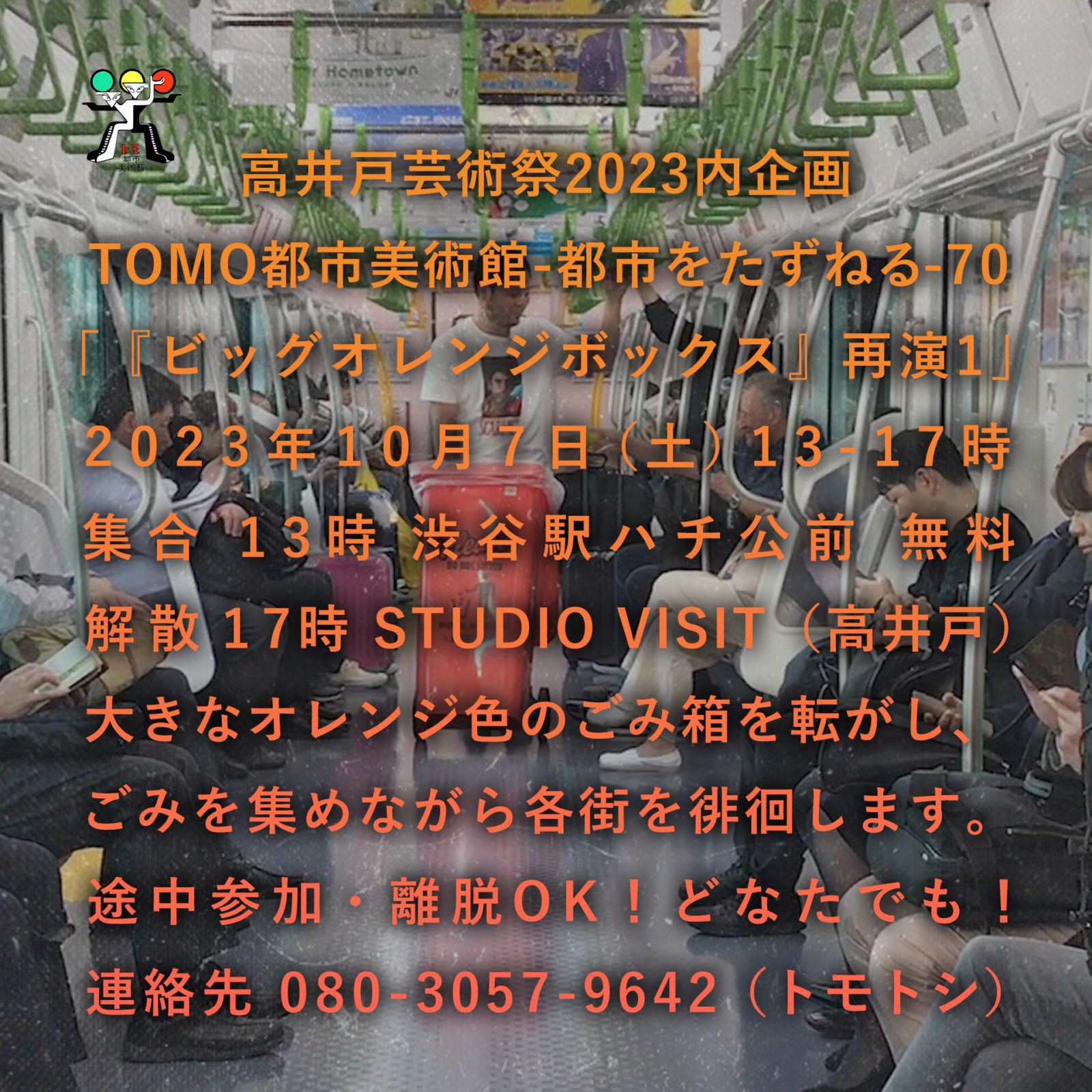
10/7(土)は高井戸芸術祭2023内のパフォーマンス企画として「『ビッグオレンジボックス』再演1」をやってみます。『ビッグオレンジボックス』は2019年の埼玉県立近代美術館での展示『有酸素ナンパ』で発表した映像作品。日本を訪れたスペイン人の友人から「東京の街にはごみ箱が全くないのに道路に全くごみが落ちていなくてびっくりした」というカルチャーショック話を聞いたことから始まった作品でした。多くの通行人のバッグやポケットにごみが入っている状態が偶発的コミュニケーションのきっかけになるのでは?という狙いがありました。今回のパフォーマンスでも、オレンジ色のごみ箱を転がしながら、ひたすら歩きます。ハチ公前からスタートして街を徘徊し、芸術祭が開催中の高井戸まで通行人のごみを集めながら移動します。
また高井戸芸術祭の背景には、高井戸にごみ清掃工場(杉並清掃工場)が建設される過程で勃発した、いわゆる「東京ごみ戦争」と言われる出来事があります。東京で出る大半のごみを江東区が引き受けてパンク状態だった1966年当時、東京都が清掃工場の新規建設で目を付けたのが高井戸でした。寝耳に水だった住民によって(足かけ9年にわたる)激しい反対運動と協議が重ねられた後、高井戸の清掃工場建設が決定しました。今回のパフォーマンスは、当時のごみの動きを追体験してみるという狙いもあります。目的地は、高井戸芸術祭開催中のSTUDIO VISIT。ここには「ビッグオレンジボックス」の映像が流れているので、2019年当時と現在の街の人のリアクションの比較とかできるかもです。途中からの鑑賞・離脱もちろんOK。どなたでも、よかったら適当に。誰も来なければトモトシ1人でやってみます。 ちなみに来週10/14(土)には別ルートで「再演2」を開催予定です!
On Saturday, Oct. 7, I’ll do “‘Big Orange Box’ Re-enactment 1” as a project within the Takaido Art Festival. It’s a re-enactment of a video work in 2019. There are no garbage cans in Tokyo, but the streets are clean. In other words, garbage is in the bags and pockets of passersby. I will collect that trash while rolling the orange trash cans, and communicate minimally. The tour started at 1:00 p.m. in front of Hachiko at Shibuya station and ended at 5:00 p.m. at STUDIO VISIT in Takaido.
──
都市をたずねる Vol.70 「『ビッグオレンジボックス』再演1」
日時:2023年10月7日(土)13:00 – 17:00
集合:13:00 渋谷駅ハチ公前
終了:17:00 STUDIO VISIT(杉並区高井戸西2-1-25 高井戸駅前ビル2F、高井戸駅徒歩1分)
参加費:無料
当日連絡先:080-3057-9642(トモトシ)
主催:THE BLACK FENCE(黒木健一/柵木頼人)
企画:TOMO都市美術館
協力:STUDIO VISIT
※強雨の場合は順延
※歩きやすい恰好推奨
──
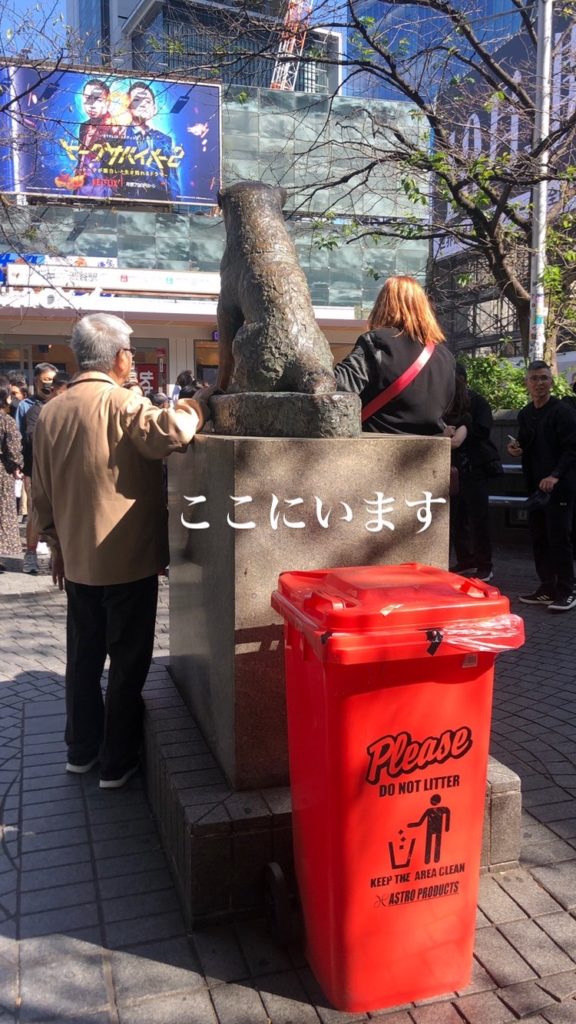
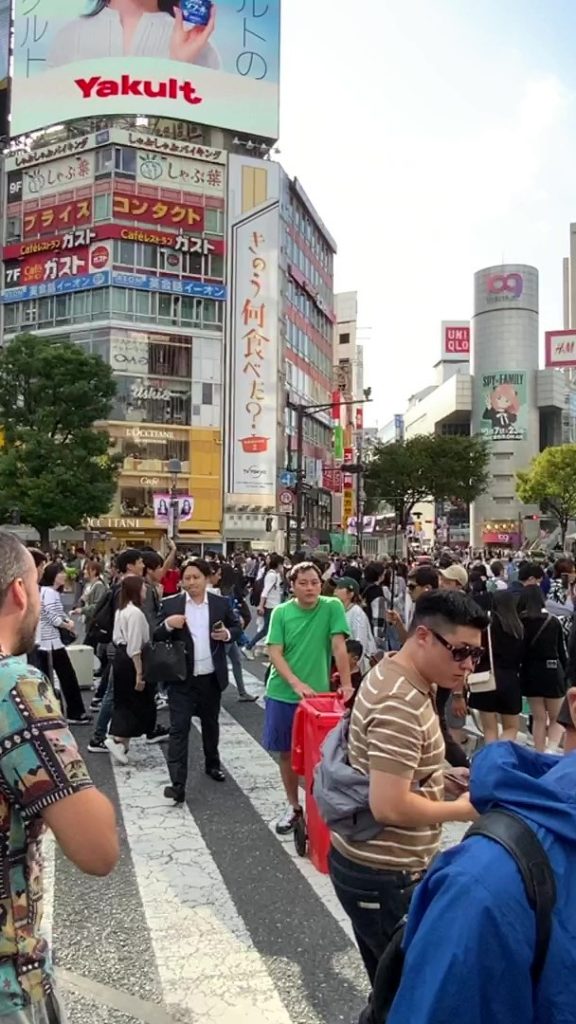
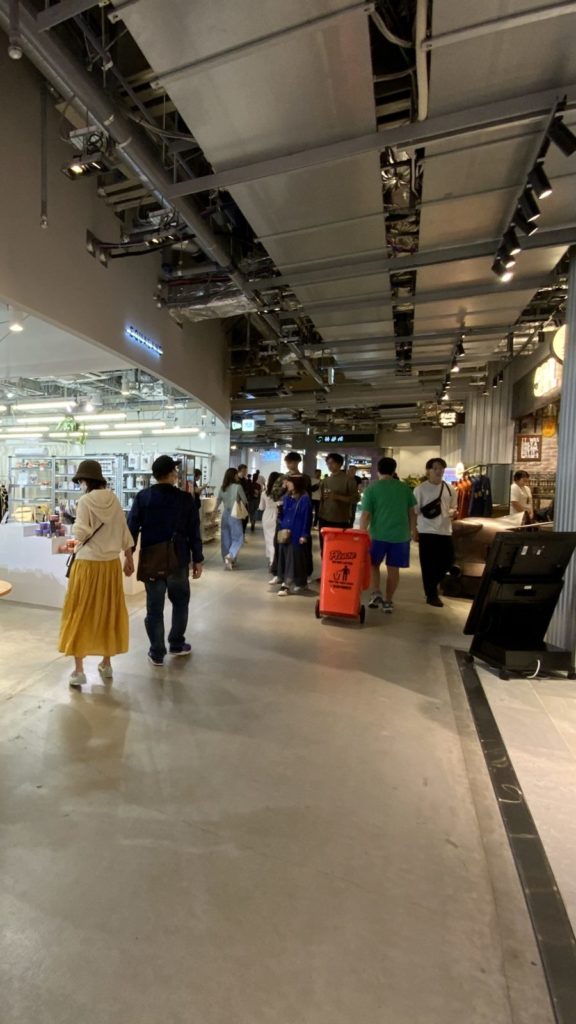
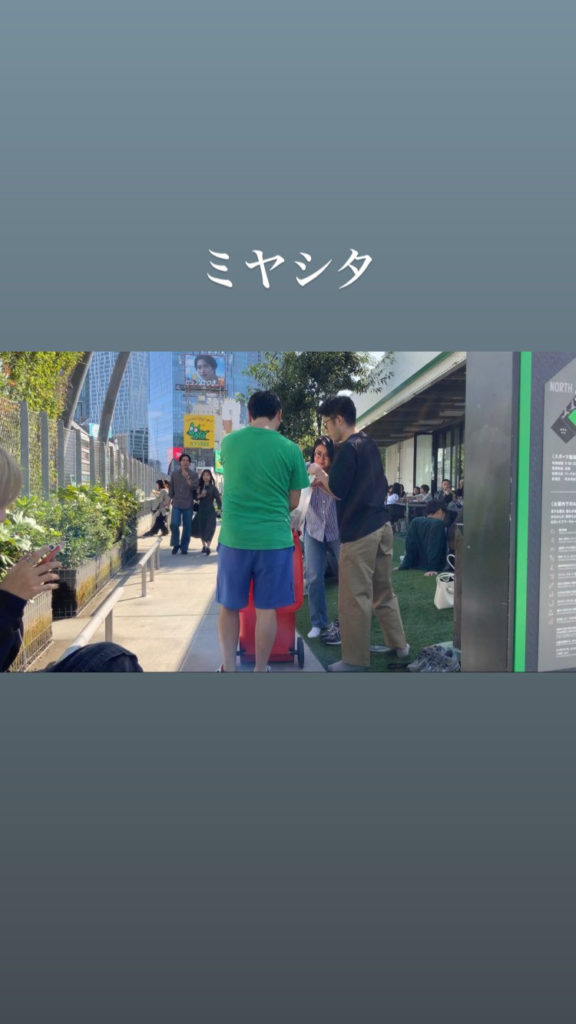
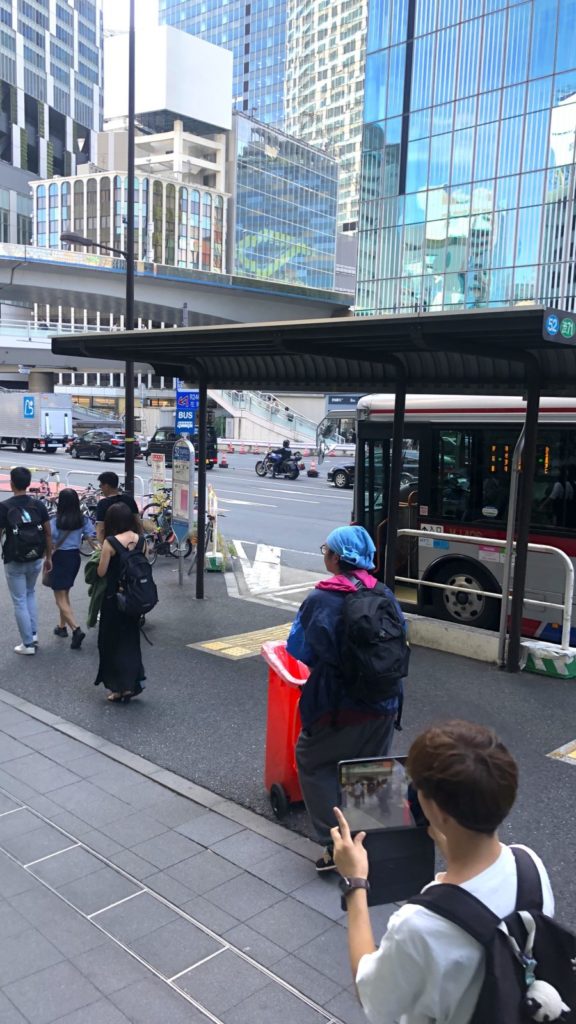
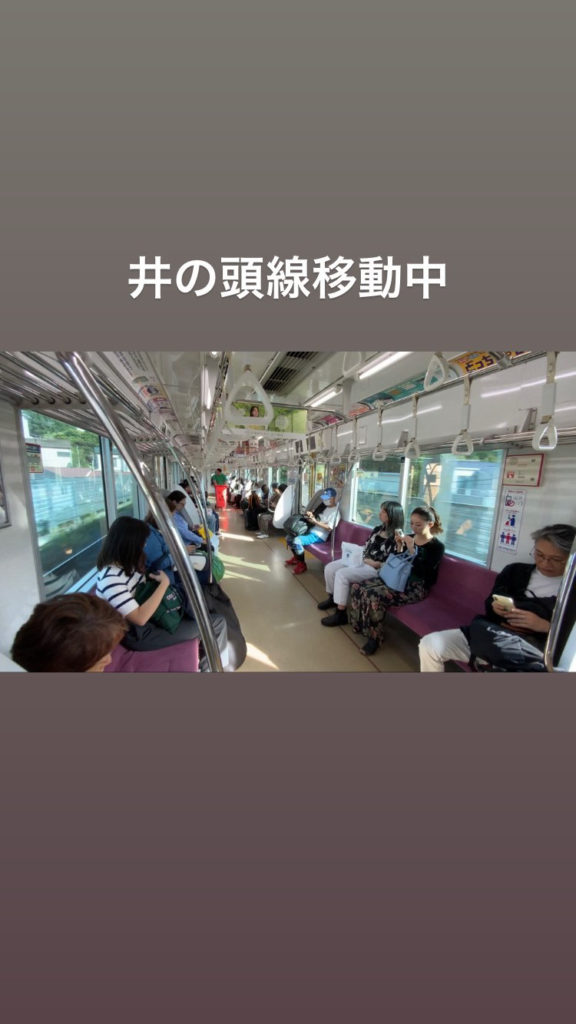
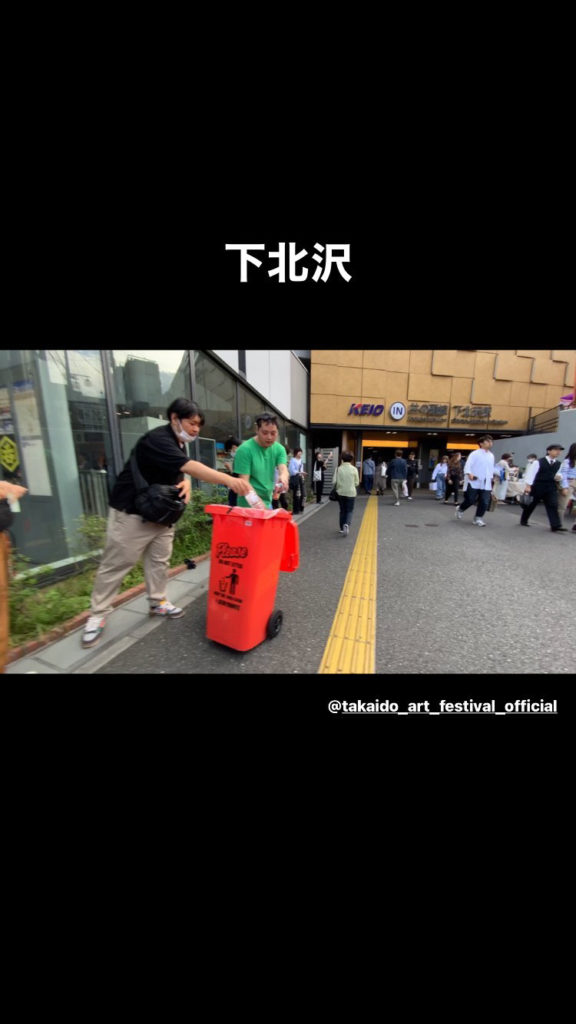

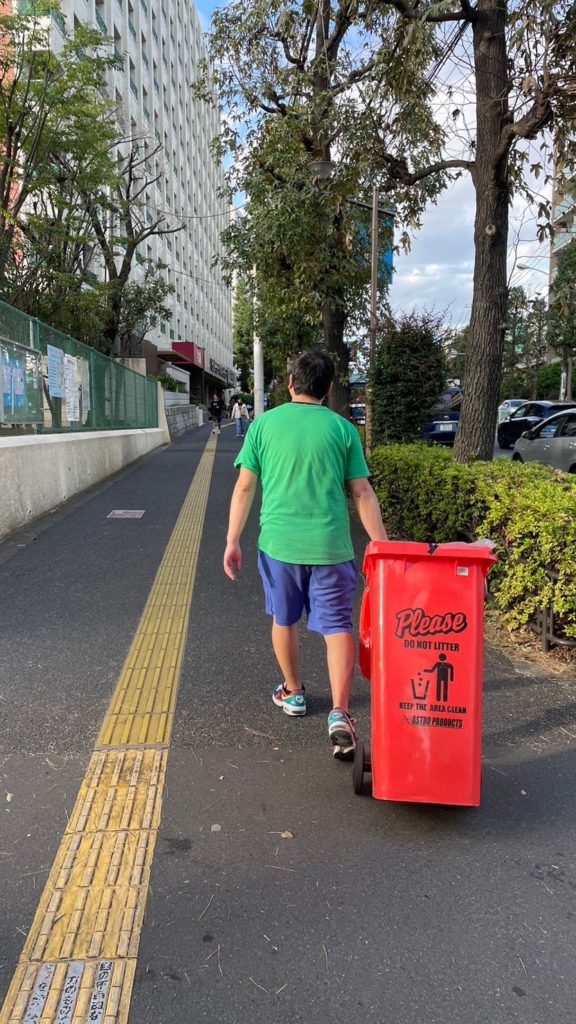
──
4年前に制作していたときも、半袖だと少し寒いなと思う初秋だったと思いだしました。ただ、大きく違うのは当時はパンデミックが起こるなど多くの人が想像していなかったこと。人と人の距離感も今とは大きく違った気がします。よって、ごみとは言えど自分の持ち物を他人に渡すというのは心理的にひっかかる人も増えたと想像していました。実践してみて、やはりごみの入り方は渋いなと感じました。ただだんだん慣れてきて、場所とタイミングによっては関係なくバンバン捨ててくれる人がいるということが確認できました。コミュニケーションと言えるかもわからないスーパーインスタントなつながりですが、それでも都市的な状況を再認識できて嬉しかったです。途中、参加いただいた方にもそれぞれごみ収集してもらいました。長時間ありがとうございました!(トモトシ)
When I first performed four years ago, it was also early fall, when it was a bit chilly in short sleeves. The big difference, however, was that many people did not imagine that a pandemic would occur at that time. I feel that the sense of distance between people was also very different from now. Therefore, I imagined that more people would have been psychologically uncomfortable with the idea of handing over their belongings to strangers, even if they were trash. After practicing, I felt that people were still reluctant to put their garbage in the trash. However, I gradually became accustomed to it and was able to confirm that there were people who would bang it out regardless, depending on the location and timing. It is a super instant connection that I don’t even know if it can be called communication, but I was happy to reaffirm the urban situation nonetheless. We also asked each of the participants to collect garbage along the way. Thank you for the long hours! (tomotosi)
──